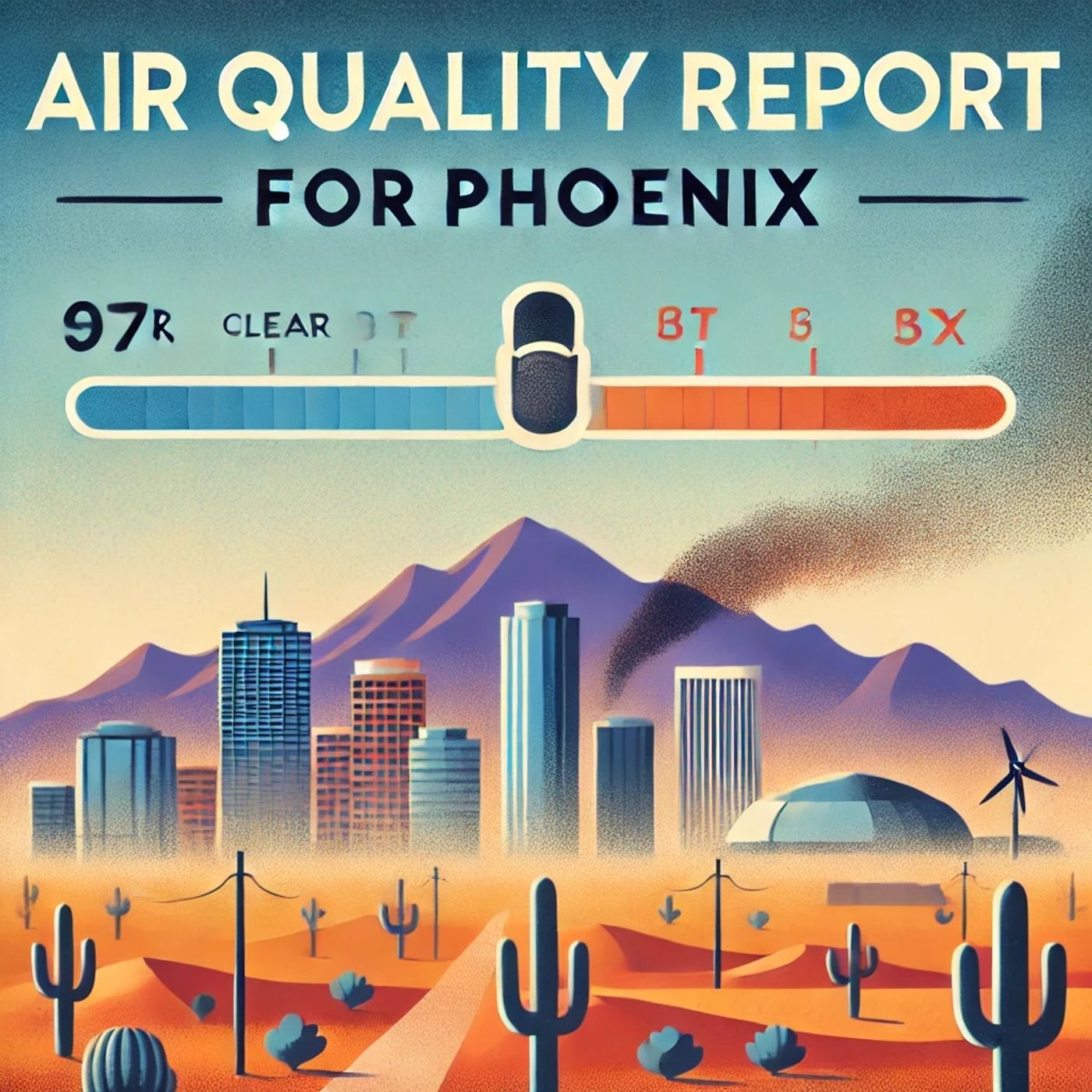Listen "Phoenix Faces Fluctuating Air Quality Due to Weather, Pollution"
Episode Synopsis
Today’s air quality in Phoenix, Arizona is experiencing fluctuations due to various factors including local weather conditions and human activities. According to data from air quality monitoring stations across the region, the Air Quality Index, commonly abbreviated as AQI, indicates a moderate to unhealthy level for sensitive groups.The AQI is influenced primarily by the concentration of pollutants such as ozone, particulate matter, and nitrogen dioxide. As of this morning, the AQI is primarily affected by high levels of ground-level ozone, which is a common issue in Phoenix due to its sunny climate and high temperatures. Ozone at ground level forms when volatile organic compounds and nitrogen oxides react in the presence of sunlight. This reaction is typically more intense during the warmer months and can be exacerbated by vehicular emissions and industrial activities.Particulate matter, especially PM2.5, is another significant contributor to the air quality in Phoenix. PM2.5 refers to fine inhalable particles with diameters that are generally 2.5 micrometers and smaller. These particles can arise from various sources among which include construction sites, unpaved roads, fields, smokestacks, and fires. When inhaled, PM2.5 can penetrate deep into the lungs and even enter the bloodstream, posing serious health risks especially for individuals with respiratory and cardiovascular conditions.Current measures indicate that Phoenix is experiencing higher levels of PM2.5 due to recent windblown dust and potential wildfire smoke carried from nearby regions. The combination of high ozone and particulate matter levels has prompted local health officials to advise sensitive groups such as children, the elderly, and those with pre-existing health conditions to minimize outdoor activities when possible.Wind direction and speed as well as temperature inversions also play a significant role in the dispersion and concentration of pollutants. Inversions, where a layer of warmer air traps pollutants near the ground, are relatively common in valley regions like Phoenix and can lead to higher pollutant concentrations.The Phoenix metropolitan area employs various strategies to mitigate air pollution. These include promoting public transportation, enforcing strict emissions standards, and encouraging the use of renewable energy sources. Moreover, residents are often urged to participate in initiatives such as “No Burn Days” during the winter months to reduce local particulate pollution.Despite these efforts, the persistent growth in population and economic activity present ongoing challenges for air quality management. As such, continuous monitoring and community engagement remain crucial in addressing and improving the air quality in Phoenix.In conclusion, today’s air quality in Phoenix serves as a reminder of the delicate balance needed to maintain a healthy environment amidst urban development and natural atmospheric conditions. It underscores the importance of individual and collective actions in striving toward cleaner air and a healthier community.This content was created in partnership and with the help of Artificial Intelligence AI
More episodes of the podcast Phoenix Air Quality Report - Daily
Phoenix Enjoys Excellent Air Quality Today
23/08/2025
 ZARZA We are Zarza, the prestigious firm behind major projects in information technology.
ZARZA We are Zarza, the prestigious firm behind major projects in information technology.
